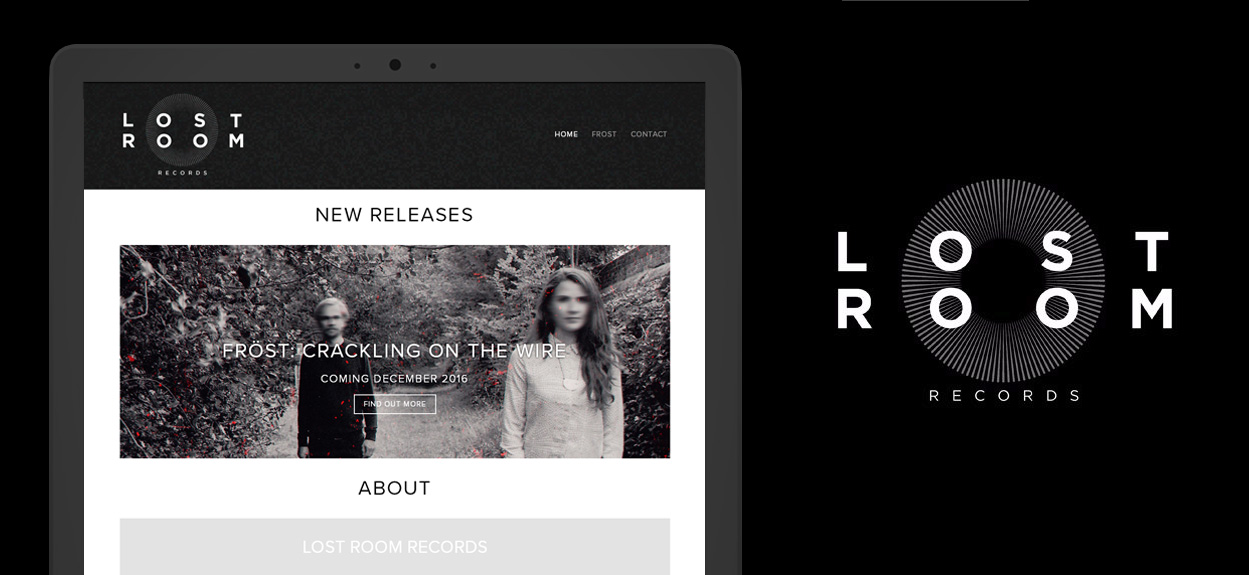This new e-commerce website for Discount Cycles has just gone live. The website features a bespoke content management system that allows for the import and management of product datasheets supplied by different manufacturers.

Find out more about our services by visiting our e-commerce web design page.
We have recently completed this branding and website project for Next Level Cycle Coaching.
Next Level Cycle Coaching provide one-to-one cycle coaching for amateur and professional cyclists.

We first developed a brand logo and then went on to design a new content managed and responsive website.
The client was very happy with the result and provided us with this great testimonial.
"The guys at Phuse have been instrumental in getting my online business up & running, it wasn't just creating a great website but the whole package; helping me to design the logo, choosing a name and creating a brand. Nothing was too much trouble & all my inevitable questions were answered promptly and skilfully. I would thoroughly recommend them!"
You can view the website by visiting: www.nextlevelcyclecoaching.com
For more information on our services you can get in touch via out contact page.
We recently encountered a situation where a key page of a client’s website simply disappeared from the Google search index. One day it was there in first position on page one of Google next day it was gone!

The first step you might well think would be to panic and that’s pretty much a natural reaction to this kind of occurrence, after all in the modern ultra competitive online market place losing your websites ranking even by a few places can have a financial effect on the business.
We are dealing with systems with rules here not magic so following some straightforward steps to deal with the problem and put in place a solution should be the order of the day.
As a Webmaster your first thought might be to just go straight to Google Webmaster Tools and re-submit the site to the search index. Good idea, but if the page has an issue that you are unaware this might not work. The best plan would be to spend a little time investigating and try and deduce what has happened to the page.
Hopefully these series of checks should help you identify the problem and get the website or web page back in Google search where it belongs.
It might seem obvious but it’s always good to cross off the obvious steps before moving on to the more complex ones. The first thing to do is to check to see if the page or website in question is still live; that any page or pages haven’t been accidently deleted or hidden through a setting in the CMS.
Just surf to the web page or website in question to check this. I did and the page was still there, first check crossed off the list.
In this scenario we are talking about one web page of a website not an entire website, but the steps taken should be the same.
The first step I took was to identify if the other pages of the site where ranking or had also disappeared from the search index. You can do this by typing the following into the Google search field:
Site:[your domain url].

From this I ascertained that the rest of the website was there it was just the one page at this stage that was missing.
I also discovered from my tests and searches through Google that the web page hadn’t just dropped down a few places or a page or two in the search rankings it had completely disappeared from the Google search index.
As a good webmaster you would be using Google Webmaster Tools, a great tool supplied by Google to help you manage your website in their search index.
There are a number of things to check in Webmaster Tools.
Manual Actions - Check here to see if there have been any manual spam submissions of your web page.
Remove URLs - You can also check here to make sure the page hasn’t been added as a removal request whether on purpose or by accident.
Crawl errors - Check here to see if any crawl errors have been reported.
Robots.txt tester - This is an important one to check. This feature of Webmaster Tools allows you to check the robots.txt for your website, making sure that page has not been set to be disallowed which means the Googlebot won’t index it. You can also use the Googlebot test feature located at the bottom of this page.

Fetch as Google - You can also use this tool to test the pages and also if necessary re-submit the page to the Google search index. In Webmaster Tools go to 'Crawl > Fetch as Google' and then enter the url of the page to see what Google makes of that page, see image below.

From all these checks I discovered no issues with the page!
This can be a tricky one to check and it would depend on how familiar you are with the SEO of the website, both on-page and off-page. In my case I had built the website and had been the only SEO person working on the site so I was pretty sure nothing had been done to cause Google to penalise the site.
Another check I made was to see if the page had been copied or ‘plagiarised’. If it had then it might have been penalised by Google, unlikely but worth a check.
This might have happened for a number of reasons; the page content might have been used elsewhere on the client’s website therefore duplicating the content something Google doesn’t like as we know. Someone might have taken the content and used it on their own website, or the site might have been cloned and an entire copy of the site might be running somewhere on the web! I have actually experienced this last one but that is a story for another blog post.
There are some free online tools you can use to check this including: http://www.quetext.com/ or https://searchenginereports.net/plagiarism-checker/
It’s worth checking to see if the site or web page appears in other search engines, run a search through Bing www.bing.com to see if the page appears. If it does then it’s a Google search specific issue.
Another check would be to see if the web server that hosts the website restarted recently. It could have been the case that the server restarted at the same time the Google bot was visiting the website. This would mean that the bot records the site or page as missing and its then removed from the Google search index.
Another possible cause was that the page was being found as 404 (Page not found) rather that a 200 (page ok). A long shot but worth checking out, you can use this tool to check the setting of a page: http://tools.seobook.com/server-header-checker/
In my case this wasn’t a problem so I moved on.
After making all these checks I couldn’t find anything wrong with the web page so I decided to re-submit the web page to the Google search index and wait to see if it reappeared. 24 hours later the page was back in position 1 on page 1 of Google as if it had never left!
What caused the disappearance? I can’t say 100% but it may well have been a server outage that caused the page to go missing. A couple of days before I noticed the page missing, the server that hosted the site had restarted after a routine update. It could have just been a horrible coincidence that the server restarted as the Google bot was visiting the page.
As with most things Google we’ll never know 100% what happened but if you follow these logical steps you should be able to find clues as to why and then rectify the problem.
Excited to have produced a new logo and website for electronic record label Lost Room Records.
Big things are set to come from Lost Room with the release of their first single by the band Fröst on 1st december!

You can visit the website here www.lostroomrecords.com and also follow them on Twitter.
For more information on our services visit out portfolio pages or get in touch via out contact page.
Recently completed bespoke website development for Dovetail Architects; a large architectural firm based in Brentwood, Essex.
Phuse designed and built a new website which includes a projects/portfolio section. The website allows the client to add new projects and update existing projects through the website CMS administration.
The quick and intuitive portfolio interface allows the website to be used as a marketing tool during meetings to showcase Dovetail's architectural services to prospective clients.

Dovetail Architects home page view and below the project detail page view.

Visit the Dovetail Architects website here.
To see more of our web design projects visit our portfolio section. You can call us on 01702 482011 or send us an email enquiry by clicking here.
Did you know that audiences are 10 times more likely to engage with your website if you have video content, or that 71% of online marketers say that conversion rates from video outperform any of their other content?
Those are just some of the facts and figures that are making business owners take notice of this marketing phenomenon, and use video in their marketing strategy.

Millions of people in the UK watch online video
When it comes to reaching your target audience, no other marketing format does better than video. YouTube alone reaches more than one billion visitors every month, and in the UK one in three people watch an online video each week, there are also other popular platforms like Vimeo. That might not sound like much at face value, but it equates to 20 million people a week. Imagine having a share of those statistics.
And video isn’t just something for the big companies. More and more small businesses are using video in their marketing campaigns. From fun and memorable explainer videos that use animated characters to tell a story, to whiteboard videos and product videos, there is so much choice available to businesses looking to capitalise on video marketing.
Done in 60 seconds
With video you can say so much more and in less time than you could with a page of written content. And it's more entertaining, too! Your visitors don't want to wade through pages and pages of text, so don't put them through that. You can say more with video in 60 seconds than you ever could with text, so why not put video to work for you? At Phuse Media, we have helped many of our clients to realise the true marketing power of video, and you can see some of our most recent video production work here.
Video engages more senses, and enables you to use more mediums to capture the attention of your visitor. How many ads have you been moved by in the past? How many ads have led you to purchase a product or service? It’s all about understanding your target audience, and delivering a message that they will respond to. What’s more, video is easy to digest and in 60 seconds you can persuade a potential customer to get in touch, find out more, or buy your product.
Reach out to a wider audience
One of the biggest advantages of video marketing is that it gives you the ability to reach a wider audience - millions of people if you want to. The return on investment with video is huge, especially when you consider a video can go viral and gain millions of views in a matter of days. This isn’t rare anymore, and if you use a great idea, you could have a viral phenomenon on your hands.
Longer visits
Another great advantage of using video is that it makes people stick around longer on your website, social media page or YouTube channel. They are also more likely to remember your message because it engaged more of their time and senses. In a few seconds you can get across your wonderful idea, the benefits of your product or the story of your company and really make an impact.
Good for SEO too
Of course, if you are publishing your video on your website, you need to attract people to your website to view it. When used in the right way, video can be a very powerful form of content and make an excellent contribution to your SEO strategies. The result is that more people are able to find your website, and once they are there watch an intriguing and persuasive video that will hopefully convert them into a paying customer.
Want to join the video marketing revolution? Get in touch with Phuse today. We can tell you more about the undeniable power of video, and help you to reach more people than you thought possible.